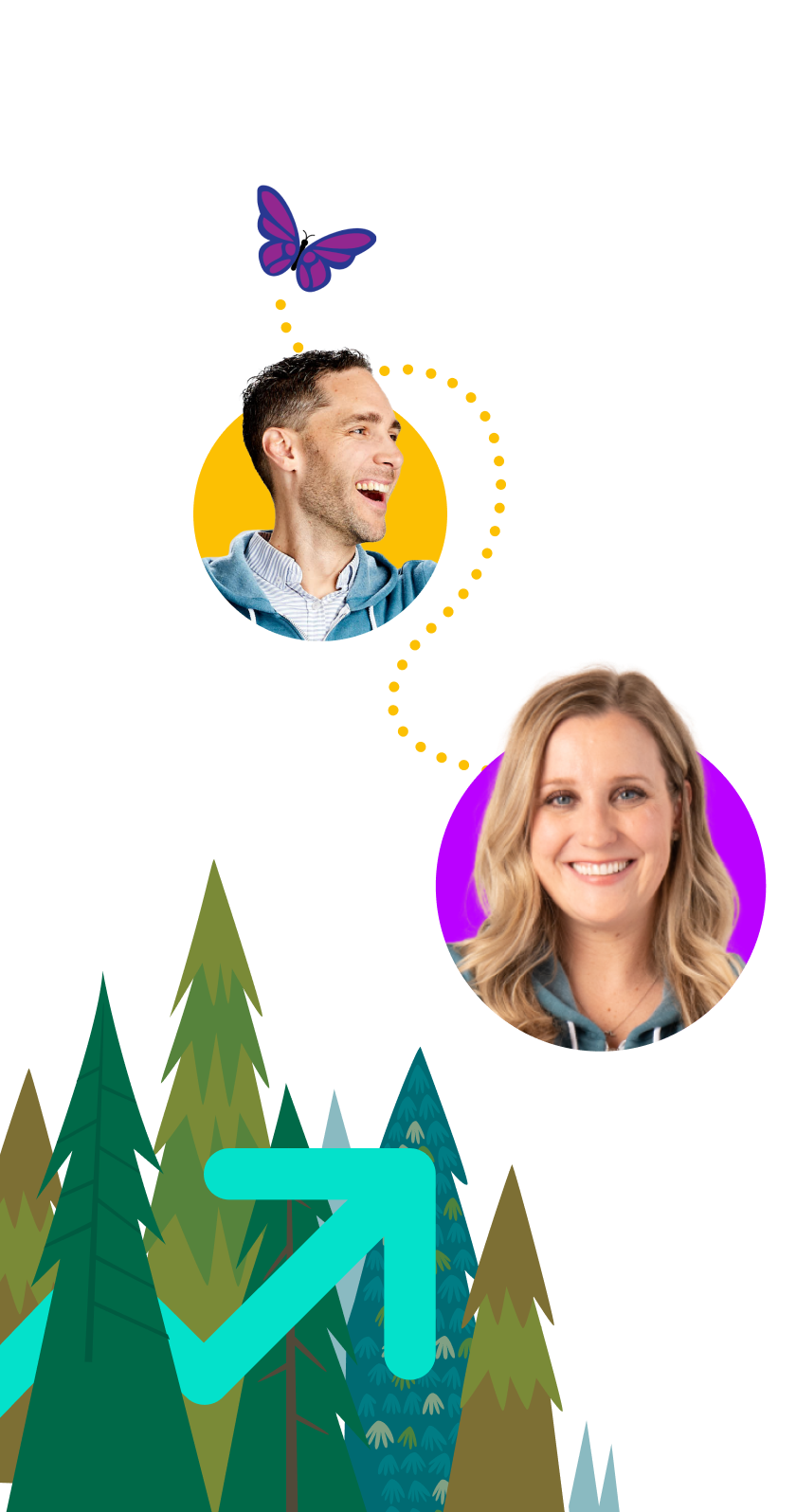Helping Closers Close More — The Important Role of Sales Development Representatives (SDRs)



While they may not be your star closers, SDRs complete the vital presales tasks that set your entire team up for success.
There’s a lot that goes on behind the scenes for sales teams before a deal is ever closed — and a sales development representative (SDR) is key to the process. You can think of SDRs as your company’s supporting players. While they may not be your star closers, they complete the vital presales tasks that set your entire team up for success. Without them, the show — or sale — would not go on.
If you’re thinking about becoming an SDR and want to understand what’s involved, we’ll explain what you need to know — including how to get hired and tips for success once you’ve landed the job.
Join the Salesblazer movement
We’re building the largest and most successful community of sales professionals, so you can learn, connect, and grow.

What you’ll learn
- What is a sales development representative (SDR)?
- What does an SDR do?
- How to get hired as an SDR
- 5 tips for success as an SDR
- 3 tools to support your work as an SDR
What is a sales development representative (SDR)?
A sales development representative (SDR) is a sales professional who manages all top-of-the-funnel activities in the sales cycle. Top-of-the-funnel activities include everything that happens before a prospect is ready to make a purchase — from gathering prospect data and educating prospects to qualifying leads and booking meetings.
SDRs have traditionally been seen as entry-level positions, but they do require a specialized skill set. In my experience, companies that treat them as top-of-the-funnel experts with an important role to play see more success as a result.
What does a sales development representative do?
SDRs often function as a bridge between the sales and marketing departments, doing a mix of inbound and outbound presales work.
The main responsibilities of an SDR often include:
- Prospecting: The process of identifying potential customers who are a good fit for your company’s products or services and likely to convert. For SDRs, prospecting starts by creating a buyer persona, or a description of your ideal customers. Once you know who you’re looking for, you can start identifying companies that match your buyer persona and put together a list of prospects, or potential customers. The final step is outreach — connecting with the prospects you’ve identified, usually via cold calls and emails, to gather more information about their interest, budget, needs, and goals.
- Lead qualification: Once you’ve got a list of leads, the next step is to qualify them. This involves researching leads to determine if they’re worth pursuing. You’ll deep dive into companies to understand their unique needs and challenges and determine whether they have a need for your offering. Outreach is also part of this stage. This process isn’t just for new leads, it can also include identifying additional sales opportunities for existing customers.
- Lead nurturing: After qualification begins lead nurturing. SDRs again reach out to leads — typically through email campaigns, content marketing, and demos — and keep track of how they respond to their efforts. They use that data to personalize future messages and guide them through the sales pipeline. The goal of nurturing is to educate prospects, encourage engagement, and build trust. It’s how you stay top of mind while prospects are in the research and consideration stage of the buyer’s journey.
- Booking meetings: As an SDR, this is your end goal. Once you’ve qualified and nurtured a lead, you book a meeting and prep the sales rep on what they need to know about the prospect to successfully close the deal.
There’s a lot to juggle. However, SDRs are often part of a sales team that divides these responsibilities between multiple people, so you won’t necessarily be tasked with the whole list. You may focus on one area or a combination of presale tasks based on how an organization defines the role. In most cases, an SDR’s most important partnership is with the sales rep they set meetings for.
How to get hired as an SDR
If you’re curious about pursuing a sales development representative role, consider relevant training programs and online courses that cover key skills and basic sales concepts to help you in the job. These are often great places to network and have the potential to open doors.
While some SDR job listings will include a degree as a “preferred” qualification, many companies value direct experience at least as much — especially if you show a willingness to learn on the job. Getting some experience in a sales role — even if it’s in a different field, like retail — can be a good alternative first step because many skills, like understanding customer needs and handling objections, are transferrable.
But the best strategy for landing an SDR job in my opinion is to act like a salesperson. Don’t settle for sending out resumes or responding to job ads. That’s what everyone does. Be proactive.
In practice, that means:
- Make connections: People skills are a vital part of any sales role, so work on building a network in your preferred industry. Attend relevant networking events and start conversations — just showing up isn’t enough. Make a habit of following up with those you meet to keep the connection going. Join sales communities to meet and learn from people in the field. The Salesblazers community is a great place to start. LinkedIn can help you identify companies you’re interested in and contacts in relevant roles. Create a list of people you want to connect with and send them messages to meet up for coffee or have a short phone call. All of this will help you build a network, while also developing some of the research and outreach skills you’ll need in the job.
- Pick up the phone: When you identify a company you’d like to work for or a job that looks like a good fit, find a phone number for the hiring manager and make a call. Learn what you can about the company and role first, so you can make a personalized pitch for why you’re a good choice. Getting comfortable with cold calling will come in handy should you land a job in sales, and showing initiative helps you demonstrate that you have what it takes.
- Do your research: Once you land an interview, come prepared. By showing up with clear knowledge about the company and hiring manager, you’ll demonstrate research skills that are important to the role. Be prepared to answer situational questions — something a good sales community can help you prepare for. Ask your peers about the common issues they’ve encountered in the role to help you become better prepared for hypotheticals.
5 tips for success as an SDR
Getting the job is just the first step. You also want to do the job well once you have it. Here are a few good tips:
1. Understand your role
Being an SDR at an enterprise tech company will look different than being one at a mom-and-pop card shop. SDR is a role where job responsibilities can vary considerably based on how the sales team is structured. That means the first step to succeeding is making sure you understand what your position entails.
At the application stage, read the job description closely to make sure it matches what you want in an SDR position. You don’t want to end up in a role that emphasizes growing inbound leads if your preference is to focus on outbound. In the training stage, ask a lot of questions about what the sales team’s goals are, what your main responsibilities will be, and how to measure the success of your work.
The best approach to the job will depend on your main objectives. Some common metrics companies use to measure an SDR’s success include:
- Activity metrics, such as the number of total calls you make and emails you send
- The number of qualified prospects you help add to the pipeline
- The number of meetings you book for your sales rep
- The number of qualified meetings you book for your sales rep
At organizations where the emphasis is more on finding and booking qualified leads, the typical day will include more research to better understand each prospect. Where activity metrics are the priority, more of your time will go toward cold calling and emailing.
And make use of the institutional knowledge around you. Veterans on a sales team are one of the best resources available for learning about strategies that work. Ask them to talk you through how they found past accounts, identified the most lucrative ones, and moved them through the pipeline. You don’t have to start from scratch; you can use their experience to help you develop your own process.
2. Get to know the company
You can’t sell effectively without understanding your product, who it’s for, and how it helps solve their problems. Learn as much as you can about your company’s customers, including how they use your product, what they like about it, and what challenges it helps them solve. Pay attention to which customers are the most valuable to the company — those who tend to spend more or who display long-term loyalty — and use that information to create your buyer personas for prospecting.
3. Find a workflow that works for you
As a rookie SDR, you may be tempted to just sit down and start calling as many prospects as you can. But I’ve seen how quickly that can lead to burnout. Cold calls are a big part of the job — they’re the most customized way you can get in touch with someone to bring them to the table. But you should approach them strategically.
To sustainably make all those calls, developing an organizational system for how you approach the job each day is crucial. For example, you might try a productivity strategy like time blocking. At the end of the day, you’ll need to know what tools you have support your work and improve efficiency. Your company might already have some powerful tech tools in place that can automate routine tasks, speed up your process, and help you achieve more effective results.
4. Hone your soft skills
A good SDR is always working to improve. Apart from the technical skills required for the job, you also need to build the soft skills that matter most, such as:
- Self-discipline: People in this role must learn how to operate independently. A manager won’t typically hand you a specific list of tasks to complete each day — it’s up to you to manage your daily workflow.
- People skills: Chatting with prospective customers, especially on cold calls, is a big part of the job. And interpersonal skills are key. Ask open-ended questions, really listen to the answers, and find points of connection to build relationships.
- Persistence: Any sales role must deal with a certain amount of rejection. SDRs will need to develop the resilience and courage to keep picking up the phone and trying to reach prospects, even when it’s hard.
- Coachability: You also need to be good at taking and applying feedback. If you can show your willingness to adapt to the needs of the company and your team, you become an asset.
- Curiosity: SDR strategies change over time, as will your company and its products. The best SDRs are proactive and consistent about seeking out new learning opportunities and staying on top of industry trends and developments.
5. Embrace collaboration
In my experience, building community can also make the hardest parts of the job easier. Let’s look at cold calling, for example. This is usually a solitary activity, and it can be tough getting rejected over and over. I’ve found that making cold calls with a team (not simultaneously, but with others watching in over Zoom), can be a great way to show support for your peers. Plus, it’s a good way to learn — you might see some techniques you haven’t tried yet. And maybe most importantly, it’s a good reminder that everyone faces those hard calls. Even your most skilled colleague will get hung up on from time to time. Experiencing that together can help you build the resilience the role requires.
3 essential tools for SDRs
Here are some of the most valuable tools SDR’s can use to do the job more efficiently and effectively.
1. CRM
A CRM (customer relationship management software) is the central source of truth for your sales organization. Your team can log detailed notes about each lead, such as where they are in the funnel and their communication preferences. CRMs update in real time for all users, so everyone has easy access to the most current information about each account.
Some CRMs include automation features that will handle routine parts of the sales process, taking them off your to-do list. A good CRM will also provide comprehensive analytics to help you learn from past deals and continually improve.
2. AI tools
AI can’t do the job of an SDR, but it can speed up and automate some of your most common tasks. For example, an AI tool like Einstein offers features to enhance your workflow. You can learn key details about each prospect with less manual digging, pull that information into your CRM automatically, and use the product’s conversational insights to enable more productive, successful calls. Predictive AI features can parse your data to identify which accounts are most likely to close, helping you prioritize your activities. And all those cold emails no one likes writing? AI can draft emails for you that are personalized with details pulled from the CRM, so all you have to do is review and tweak them before hitting “send.”
3. Communication tools
Communication and collaboration are essential aspects of the job. Tools like Slack can help you stay in touch with your team throughout the day. Communication tools that integrate with your CRM let you access real-time account and deal info in the same place where you connect with colleagues, making effective communication more efficient. When you need to connect in a more immediate way, video conferencing software is a good tool for all your virtual meetings.
Find success as an SDR
Being an SDR requires a specialized skill set and a lot of hard work. But with the right tools and a strong community, it can be a rewarding career. Whether you’re still considering if becoming an SDR is right for you or you’re years into your sales career, finding a professional community is a valuable resource for connecting and learning from others. And once you’ve landed your dream SDR job, using the right tools is key to creating an effective workflow that increases your odds of success.
8 sales productivity pitfalls (and how to avoid them)
Get the Sales Productivity Workbook and avoid pitfalls like bloated tech stacks and approval bottlenecks.




























